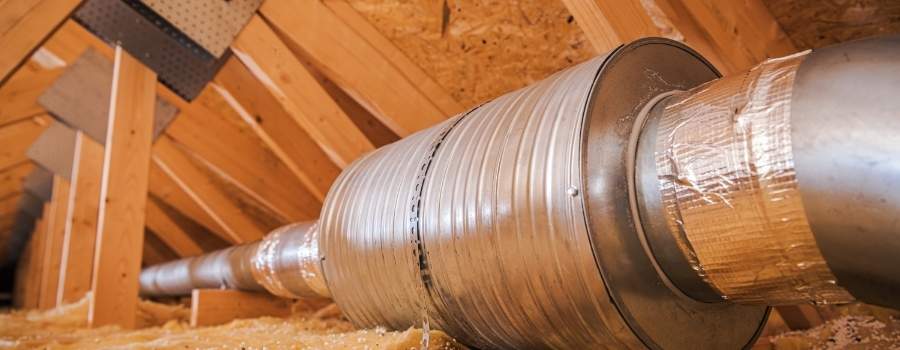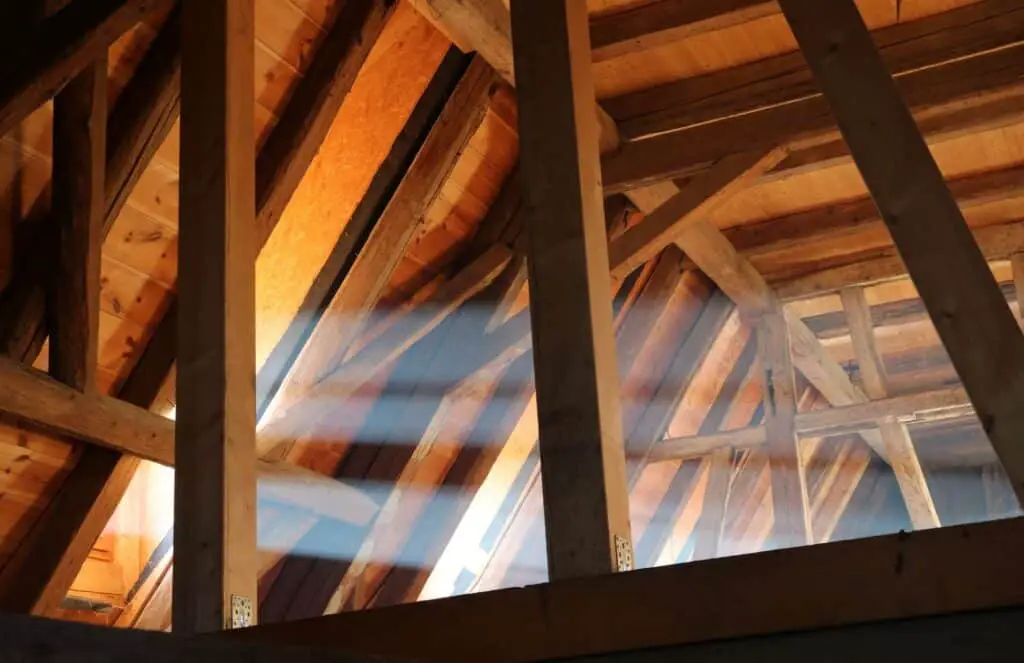If you’ve ever been in the attic during the summer you may have noticed it’s like an oven up there. Many homes install fans to keep air moving to drive the temperature and humidity down, and a popular option is a solar attic fan. People like to let the sun and their flat, heat-absorbing roof do a little cooling for them.
The main reason a solar attic fan stops working is that it’s not getting direct sunlight. If it’s overcast or the sun has dipped behind the trees, then the photovoltaic panel will stop pushing energy to the fan blade’s motor causing it to stop immediately.
This is the most common reason, but other issues could be causing your fan to not keep your attic cool and dry. Luckily, most are easy fixes however, one situation might set you back some money.
This article may contain affiliate links.

Solar Attic Fan Not Working? Here’s How To Troubleshoot
Solar-powered attic fans…like this model from iLiving...are extremely quiet, that’s actually one of the biggest appealing features of one. But you might confuse its silence with being broken and not working. So, the first thing you need to do is get up in the roof and closely observe the fan. Make sure it is actually spinning or sitting there motionless.
Many solar attic fans need to have the photovoltaic panel (this is the technical name for the solar panel) sitting in direct sunlight during the hottest part of the day, usually between noon to 8 PM.
If there is cloud cover or some trees casting a shadow over this panel, the fan will stop working almost immediately because the photovoltaic panel will stop converting solar rays into energy. No energy means there is nothing rotation the fan blade motor.
If your panel is in direct sunlight you could still have some issues if you let the photovoltaic panel get dusty or dirty. Anything that blocks those solar rays from directly hitting the panel will start to compromise the efficiency of the fan. The next time you go up on a ladder to clean the gutters, give the solar panels a good wipe down too.
If your attic fan still isn’t moving then check for a loose connection. You should be able to easily remove the solar panel and check the wiring that’s leading to the battery pack and the wires leading to the fan motor. If any are loose, carefully reseat them. If they are broken or frayed you can try desoldering them if you are comfortable with that.
Lastly, you can replace the fan. If it’s the same brand and model you won’t even need a professional. Just pop the old one out and sit the new one in.

Why Do I Need An Attic Fan Anyways?
In general, an attic fan is going to drive excess heat out of your attic. This is important because the wood and insulation that connects your attic floor to the ceiling of your house is going to act like an oven and will retain heat after the sun goes down and radiate into your home, making AC units work hard.
Here in Dallas, the attic at my house was hitting 130 degrees F when the outside temperature was at about 100 degrees F. Some people report their attics reaching temps upwards of 150 degrees during the hottest days of summer…looking at you Phoenix!
There is actually a little debate on this subject between homeowners and builders. Some believe a fan is greatly needed and a home is incomplete without one, others believe that an attic fan isn’t doing that much work and roof vents are just as good.
My thought is that if you live in a very hot or very humid location, then they are a necessity. If you live in a more mild climate then roof vents are probably okay.
A fan will also keep airflow moving and dry out some moisture if you live in a humid location. And it’s not just natural humidity you need to worry about. Showers, tubs, dishwashers, and cooking will also give your home a humidity bump. Attic fans will lend a huge assist in dropping the moisture in the air, staving off mold and mildew.
Why Is My Solar Attic Fan Not Cooling My Attic?
On average, one fan usually won’t be enough to make a difference in the temperature of your attic, especially if you live in a very hot location. You will want one attic fan rated at CFM for every 1000 SF of attic space.
One homebuilder told a Phoenix resident that his large attic would need at least 15 solar-powered fans to combat the broiling Arizona sun, and even then it would only make a dent.
In these cases of houses located in very hot places, luckily humidity isn’t typically an issue. But to assist the solar fans in their cooling duties, a homeowner may want to supplement them with electricity-powered fans and may want to consider spraying their attics with spray foam insulation that has a very high “R” rating.
What Do I Need To Know About Installing A Solar Fan?
In general, you want to Install the fans solar panel on the area of your roof that will get the most sunlight between noon and 8 PM. This is the hottest part of the day when you can collect the most solar rays. Make sure trees or other homes don’t cast shadows on the panels during this period.
Solar fans are very simple to set up, so an electrician won’t be necessary…that’s the good news. The bad news is that you will have to cut a hole in your roof, perhaps several of them if you are putting in several.
If you’re confident in doing so you can do this yourself, but it is highly recommended that you hire a roofing professional to do it. If you install the sheathing wrong you could end up with leaks or having heat escape in the winter.
To get the most out of a solar-powered fan or to determine if you might need to install more than one, take some heat and humidity measurements every evening for a few weeks before you install the fan. Then do the same thing after the fan is installed.
Take note of any significant differences to see if the installation was worth the money. If you notice a slight difference for the better, but you’re still not where you want to be then this will also help determine if you should install a few more.
Why Not Just Use A Line Powered Attic Fan?
This is another debated topic in the home builder world, but it seems like solar-powered fans are winning the debate by a small margin. I cover more details about the solar versus electric fan over here in this article.
The caveats I mentioned above, such as extreme heat and humidity are strong arguments for using standard electrically powered attic fans. They’ll work 24/7 no matter if it’s raining, cloudy, or if you live in a house with large shadow-casting trees.
It’s worth noting that solar professionals, such as research scientist Danny Parker of the Florida Solar Energy Center, agree that gable-end solar-powered fans perform far better than their roof-mounted “mushroom” top counterparts.
But for those that live in more average weather climates then a line-powered fan will cost you more than a solar-powered fan.
The price of a solar fan is anywhere between $50 – $100 dollar more than a wired fan on average, but you’ll save money on the install since you’ll have to hire one professional (roofer), not two (roofer and electrician.) And best of all, after the solar-powered fan is in, it works for free!
When selecting a solar-powered attic fan, always look to the reviews. While not a huge expense, you can still expect to pay a few hundred dollars for a quality product.
You may still qualify for some federal rebates or tax credits. While the golden age of green energy tax credits is behind us, many states still offer some rebates or tax credits when you make your house a little more energy efficient. So it’s possible that solar-powered fans could pay for themselves and take the sting out of hiring a roofer.
Frequently Asked Questions
Why Is My Solar Attic Fan Not Turning On?
If your solar attic fan is not turning on, check if it’s properly connected to a power source and if there’s enough sunlight reaching the panel.
How Can I Troubleshoot a Solar Attic Fan that Is Not Working?
To troubleshoot a non-working solar attic fan, inspect the wiring connections, clean the fan blades, and ensure the solar panel is clean and unobstructed.
What Are the Possible Reasons for A Solar Attic Fan to Stop Working?
A solar attic fan may stop working due to a faulty motor, damaged wiring, or a malfunctioning solar panel. Inspect these components to identify and resolve the issue.
How Do I Check if My Solar Attic Fan Is Receiving Enough Sunlight?
Ensure your solar attic fan receives ample sunlight by clearing any shading objects or debris that may obstruct the solar panel’s exposure to the sun.
What Should I Do if My Solar Attic Fan Is Making Strange Noises?
If your solar attic fan is making strange noises, it may indicate worn-out bearings or loose components. Lubricate moving parts and tighten any loose screws to address the issue.
Is It Normal for A Solar Attic Fan to Intermittently Stop Working?
It’s not normal for a solar attic fan to intermittently stop working. Check for loose connections, debris accumulation, or panel damage that may be causing the intermittent operation.
Are There Any Specific Maintenance Tasks Required for A Solar Attic Fan?
Regular maintenance for a solar attic fan includes cleaning the fan blades, removing debris, and inspecting electrical connections for any signs of damage or corrosion.
Can I Repair a Malfunctioning Solar Attic Fan Myself, or Should I Call a Professional?
While some repairs like cleaning and tightening can be done DIY, complex issues like motor replacement should be handled by a professional solar technician.
What Are Some Common Signs of A Failing Solar Attic Fan?
Signs of a failing solar attic fan include decreased airflow, excessive heat buildup in the attic, or complete fan failure. Promptly address these signs to prevent further damage.
How Long Should a Properly Functioning Solar Attic Fan Last?
A properly functioning solar attic fan can last 15-20 years, depending on usage and maintenance. Regularly inspect and maintain the fan to ensure its longevity and performance.

